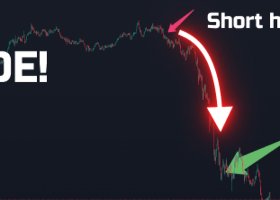Hedge funds have earned a reputation for their remarkable prowess in navigating financial markets, even the intricate landscape of forex trading. While their strategies may appear complex, one of the fundamental pillars of their success lies in their adept portfolio management and financial stewardship practices. In this article, we will delve into the art of how hedge funds meticulously manage their portfolios and capital to achieve their financial objectives.
The Art of Position Sizing1. Precision in Position Sizing
A cornerstone of hedge fund money management is the precision of position sizing. Hedge funds painstakingly calculate the size of each position they take in the forex market, considering critical factors such as:
- Risk Tolerance: Hedge funds assess their risk tolerance, determining how much capital they are willing to expose to a single trade.
- Risk-Reward Ratio: Careful analysis ensures that the potential reward justifies the risk taken in each trade.
- Portfolio Diversification: To spread risk, hedge funds diversify their portfolios by trading multiple currency pairs or asset classes.
- Strategic Use of Stop-Loss and Take-Profit Levels: Hedge funds employ stop-loss and take-profit orders with precision to limit losses and secure profits.
Leveraging Risk Management Tools
2. Safeguarding with Risk Management Tools
Hedge funds employ a range of risk management tools to protect their portfolios, including:
- Stop-Loss Orders: Defining maximum acceptable losses for each trade, these orders are critical for minimizing downside risk.
- Take-Profit Orders: These orders lock in profits when a trade reaches predefined levels.
- Trailing Stops: Dynamic adjustments to stop-loss levels as trades move in favor of the fund.
Diversification and Correlation Analysis
3. The Power of Diversification and Correlation Analysis
Recognizing the importance of diversification and correlation analysis:
- Diversification: Trading multiple currency pairs and asset classes reduces risk by spreading exposure.
- Correlation Analysis: Hedge funds evaluate correlations between different currency pairs and asset classes, aiming for uncorrelated or negatively correlated assets to minimize risk.
Vigilance in Leverage Control
4. Cautious Leverage Management
Hedge funds exercise prudence in leverage management, setting strict limits to avoid overleveraging and mitigate potential substantial losses.
Assessment of Risk and Return
5. Rigorous Risk-Return Evaluation
Each trade undergoes a thorough risk-return assessment:
- Risk Assessment: Hedge funds assess the risk associated with each trade, considering factors like market volatility and external events.
- Return Assessment: They evaluate the potential return on each trade to ensure it justifies the associated risk.
Continuous Portfolio Monitoring
6. Continuous Portfolio Oversight
Continuous monitoring is paramount:
- Risk Management Systems: Hedge funds utilize advanced risk management systems to track the performance of individual positions and the overall portfolio.
- Stress Testing: Stress tests evaluate portfolio performance under extreme conditions, identifying vulnerabilities.
- Scenario Analysis: Scenario analysis assesses the portfolio’s response to different market scenarios, aiding in preparation for diverse outcomes.
Preservation of Capital and Drawdown Management
7. Priority: Capital Preservation
Capital preservation tops the priority list:
- Drawdown Limits: Hedge funds establish limits, representing the maximum percentage loss they are willing to tolerate before taking corrective action.
- Protection of Capital: Prioritizing capital preservation over aggressive profit-seeking strategies safeguards the fund from significant losses.
Continuous Improvement
8. The Pursuit of Excellence
Hedge funds embrace continual reassessment:
- Trading Strategy Evaluation: Strategies are consistently evaluated and adjusted to match evolving market conditions.
- Risk Parameter Review: Risk tolerance and parameters are regularly reviewed to align with the fund’s objectives.
Conclusion
In conclusion, the triumph of hedge funds in the forex market and other financial arenas emanates from their meticulous portfolio management and financial stewardship practices. Precise position sizing, vigilant risk management, diversification, and continuous monitoring stand as integral components of their approach. Striking a balance between capital preservation and profit generation, hedge funds navigate markets with confidence, adaptability, and resilience.
For individual traders, adopting these money management principles can contribute to improved trading outcomes and risk mitigation. Understanding and implementing these strategies can help traders make informed decisions and, over time, develop greater proficiency in managing their portfolios effectively.
Source : www.forex-signalshub.com
Powered by Avatar Trading House
At Avatar Trading House, we don’t just offer signals – we provide a path to prosperity and a bridge between generations.



